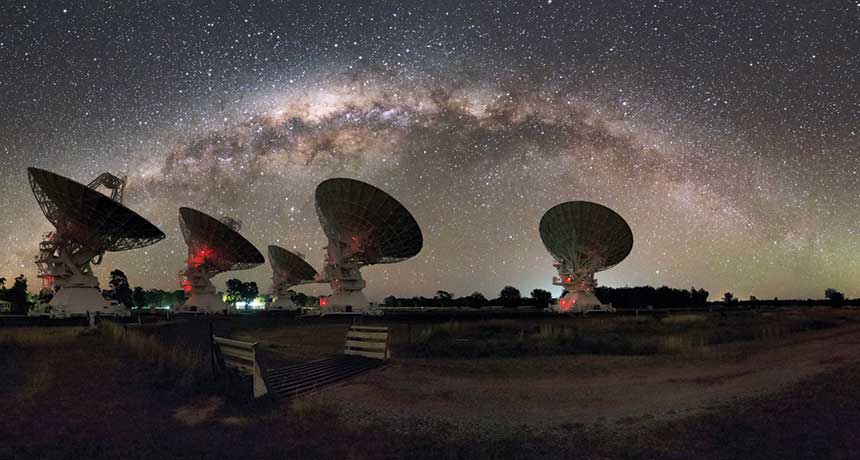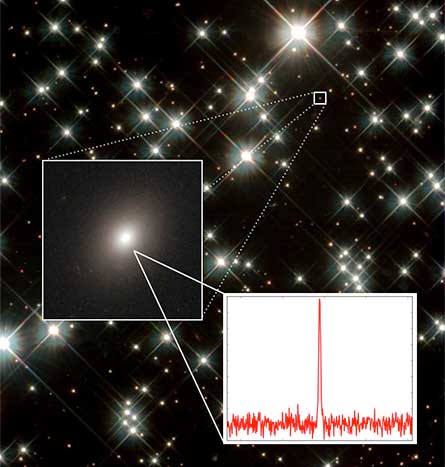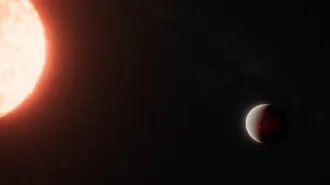Fast radio burst tracked to its galaxy of origin
Detection offers clue to matter hiding in space between galaxies

HUNTING FOR GALAXIES Radio telescopes at the Australia Telescope Compact Array (pictured) helped pinpoint the latest fast radio burst to a galaxy about 6 billion light-years away.
Alex Cherney








